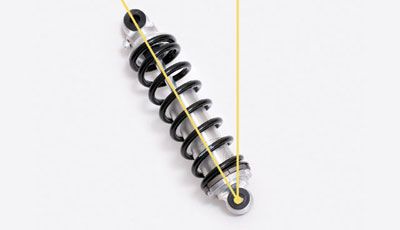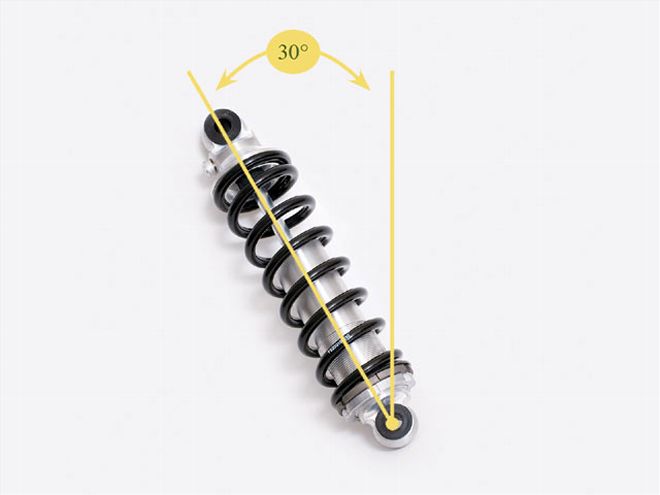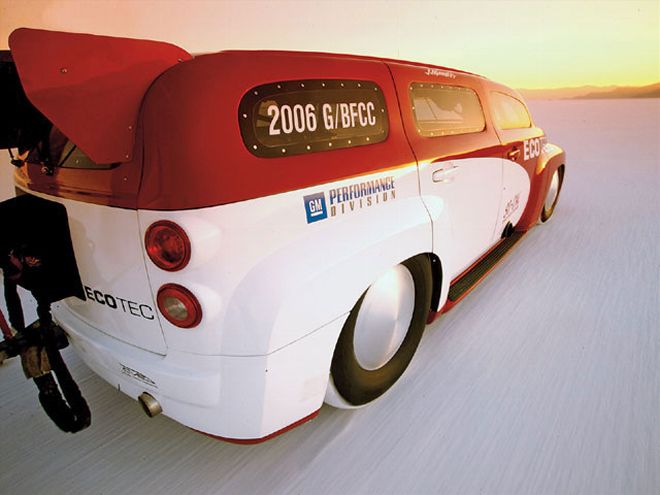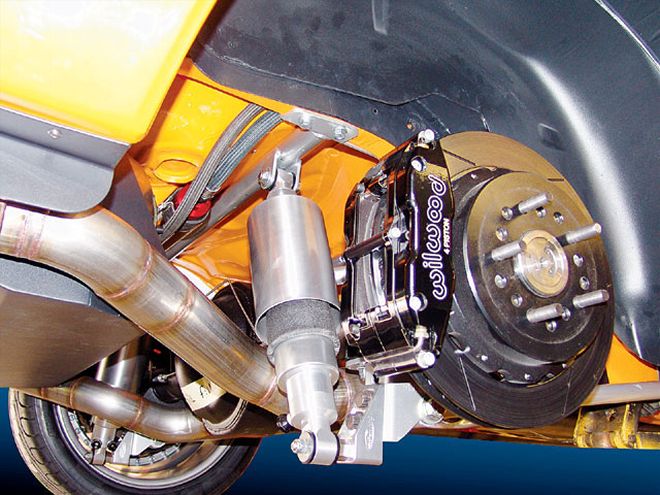
 Using a So-Cal Speed Shop Speedshock as an example, measure the angle you intend to mount it at, and use the chart above to calculate the spring rate required. You'll need to know the required rate at vertical first, though, so check with your supplier.
Using a So-Cal Speed Shop Speedshock as an example, measure the angle you intend to mount it at, and use the chart above to calculate the spring rate required. You'll need to know the required rate at vertical first, though, so check with your supplier.
Coilover shock absorbers are one of the most common forms of suspension on our kind of cars, whether used on Mustang II-based independent front suspensions, IRS systems, or in conjunction with four-links or ladder bars and a live axle.
However, the number of people who understand how they should be set up is certainly less than the number using them on their rides. There's no reason any car should ride badly, and if it does, it was either built incorrectly or something was overlooked. Too many people use a spring that's too stiff or inflate a ShockWave (Air Ride Technologies' airbag-over-shock) to too great a pressure as a Band-Aid for poor tire fitment or insufficient ground clearance. In reality, these factors should have been taken into consideration at the outset of the project, thus allowing the suspension components to do their intended job, and therefore offer the optimum ride quality.
Before we get into spring rates, let's take a quick look at what the coil spring's intended purpose is: to insulate the chassis from forces applied by irregularities in the road. Too stiff a spring will allow the chassis to accept too many of these forces, adversely affecting the ride quality and handling, while too soft a spring can cause the suspension to bottom out and result in a wallowing ride. The descriptions stiff and soft above actually refer to spring rate, and a spring of the correct rate for the vehicle will control weight-transfer correctly. Get this right, and you can attain optimum performance at your intended ride height.

So, what is spring rate? It's the amount of force that's required to compress or extend a spring (coil in this case) by 1 inch, and is measured in pounds per inch (lb/in). There's another measurement for springs, too, known as load rate, which is the amount of weight the spring is designed to carry at a certain height, but we'll concern ourselves with spring rate here. There are three factors that affect spring rate: wire diameter, mean diameter of the spring, and active coils. Actually, there's a fourth, which is the purpose of this article, and we'll come to it shortly.
The coiled metal that makes up the spring is referred to as wire, and since larger-diameter wire is stronger than smaller-diameter wire, the greater the diameter, the greater the spring rate. The mean diameter is the overall outside diameter of the spring less one wire diameter (the same as measuring from the center of the wire across the spring to the center of the wire on the opposing side, which is what you should do, but the former is easier to measure!). When the mean diameter increases, the spring rate decreases. Finally, active coils. To determine the number of active coils, count the total coils minus two for springs with both ends closed, the total minus one for springs with one end closed and the other end open. As the number of active coils increases, the spring rate decreases. Coilovers will have springs with both ends closed.
Now to that fourth variable, and one which is most often abused in practice. Spring rate will actually decrease the more a coilover is mounted away from vertical. We asked the guys at QA1 if they'd recommend mounting a coilover vertically and were told "that would be as true a spring rate as it would be possible to get. Every degree from vertical reduces spring rate." As you can see from the accompanying chart, courtesy of QA1, the correction factor increases as the angle increases to the point that if a coilover is mounted at 45 degrees, its spring rate is halved. This means the greater the angle, the higher the spring rate required to support the same weight. As an example, using the chart, if a spring rated at 150 pounds were required for an application in a vertical position, and it was mounted at 30 degrees, you can calculate the new spring rate by dividing 150 by the correction factor for 30 degrees (0.75). This gives a new rate of 150 0.75 = 200 pounds. That's quite a difference just for leaning a coilover a few degrees, huh?
 The advantage of Air Ride Technology ShockWaves is that increasing the air pressure is the equivalent to increasing the spring rate, but without the need to change components, providing adjustability for mounting angle or increased load.
SHOCK ANGLE CORRECTION FACTOR 10° 0.96 15° 0.93 20° 0.88 25° 0.82 30° 0.75 35° 0.66 40° 0.59 45° 0.50
The advantage of Air Ride Technology ShockWaves is that increasing the air pressure is the equivalent to increasing the spring rate, but without the need to change components, providing adjustability for mounting angle or increased load.
SHOCK ANGLE CORRECTION FACTOR 10° 0.96 15° 0.93 20° 0.88 25° 0.82 30° 0.75 35° 0.66 40° 0.59 45° 0.50
Progressive Coils
As an aside to the above, variable rate springs are also available. Normal coil springs are linear. For example, a 100-pound spring will compress 1 inch with a 100-pound load on it, 2 inches with a 200-pound load, and so on, the spring rate will remain constant at 100 lb/in. Variable rate springs are progressive, compressing 100 pounds for the first inch in the previous example, then requiring 150 pounds to compress the second inch and so on, making the spring rate progressive. Typically, these springs have varying spacing between the active coils, and during compression the coils closer together will bottom out, effectively stop working, and thus increase the spring rate due to "reduction" in the number of active coils.
Progressive coils typically have a soft initial spring rate, getting increasingly firmer to handle more weight and improve handling. Obviously, you can't use the chart here to determine spring rate when a progressive spring is mounted at an angle, and we'd advise checking with your coilover supplier if you opt for progressive springs.
ShockWaves
As an air spring is the equivalent of a coil, an Air Ride Technologies ShockWave is the equivalent of a coilover, as it incorporates a shock absorber, with the added bonus that you can increase the air pressure, thus increasing the spring rate. According to Air Ride Technologies' president, Bret Voelkel, "A light car, such as a '32 roadster, would probably require a coil spring rated at 75-100 pounds, translating to 40-pounds pressure in a ShockWave. The same ShockWave will go on a heavier car, say a '30 sedan, which would require a spring rate in the region of 175-200 pounds, inflated to 70-75-pounds pressure. Add a couple of passengers and you can increase the air pressure to compensate with no compromise in ride quality or component changes."
You can see there are variables that influence the air pressure (or spring rate) required. Selecting a spring to achieve optimum height is important, though the threaded adjuster on a coilover can help here, and every coilover or ShockWave has an intended height, which takes us back to our comment earlier about setting the suspension up correctly from the outset.